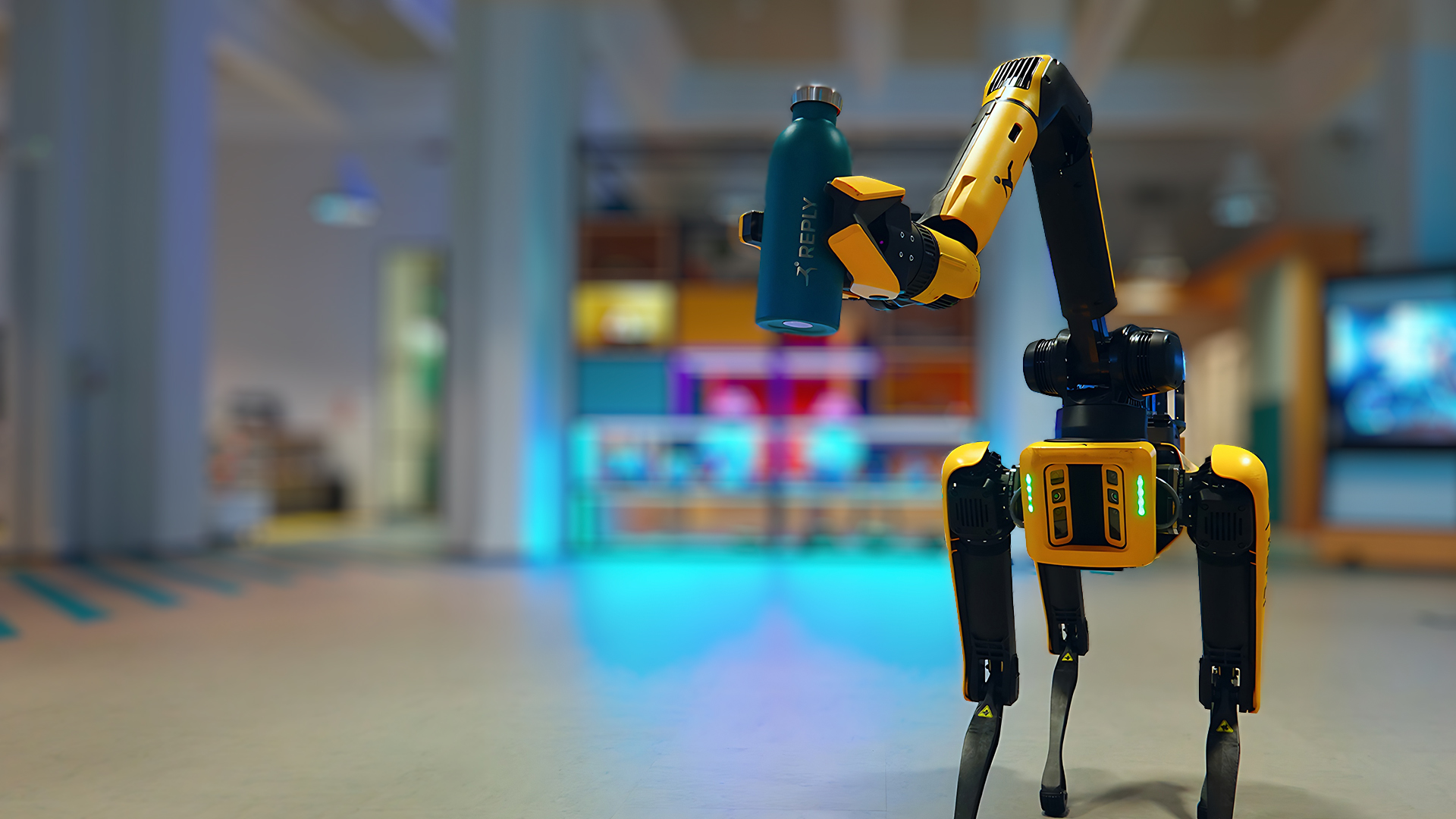,allowExpansion)
From lab to industry: Engineering the next generation of humanoid robots
Reply is at the forefront of developing software ecosystems and AI solutions that enable humanoid robots to be integrated into human-centered environments, combining advanced hardware with robust, customized software ecosystems based on ROS 2.
The vision
Robots built to fit people’s needs, not the reverse
Humanoid robotics is one of the most advanced and promising areas of Artificial Intelligence (AI), driven by the simple fact that our world is built for the human body. Rather than reshaping the environment to suit machines, humanoid robots offer a way to adapt automation to the world as it is – walking our hallways, climbing stairs, using human tools, and working safely alongside people.
At Reply, we are at the forefront in researching how these systems can soon seamlessly operate within human-centric environments such as factories, warehouses, hospitals, and other facilities. Through hands-on research and development, we are laying the foundation for a future where humanoid robots can become real-world collaborators enhancing operations, improving safety, and supporting workers in meaningful ways.
)
The challenge
Advanced Robotics for High-Resilience Industrial Applications
To bring cutting-edge platforms like the Unitree H1 or Boston Dynamics’ Atlas from the lab into the demanding world of industrial applications, we partner with hardware manufacturers to build upon their foundational technology. General-purpose robotics platforms provide a remarkable starting point, but achieving the resilience and specialization required for mission-critical logistics and manufacturing tasks demands a deeper level of integration and custom engineering. To unlock a robot's full potential for these specialized use cases, a custom-tailored software ecosystem is essential. This is where Reply's expertise creates a bridge between advanced hardware and real-world industrial value.
Our solution
A ground-up approach to Embodied AI
In our Area42 innovation lab, we developed a complete, robust software and hardware ecosystem to elevate these platforms to an industrial-grade standard. This was not just about writing code; it was about building the central nervous system that allows our robots to act with true autonomy and reliability. Our solution is based on the industry-standard Robot Operating System (ROS 2) and features:
The core capabilities
Perception, decision, and action
Our integrated system enables the exploration of critical abilities that humanoid robots will need in the field – supported by on-board AI and edge computing for low-latency performance.
3D environmental understanding with SLAM
Using the robot’s onboard LiDAR and RGB-D cameras, we implement Simultaneous Localization and Mapping (SLAM) to build and maintain detailed 3D volumetric maps in real time. These maps help the robot navigate complex, unstructured environments such as warehouses, production lines, and dynamic workspaces. Our SLAM system fuses depth and visual data to detect changes, avoid obstacles, and adapt to new layouts.
Fluid, intelligent motion with advanced algorithms
Legs, arms, and grippers need to move in perfect harmony with people, environments, and tasks. Advanced kinematic models calculate the optimal, collision-free paths for picking, placing, and manipulating objects near people and obstacles. Our balancing algorithms provide stability even on uneven or slippery surfaces. Additionally, ergonomic control of the upper body, hips, and arms allows for natural interactions such as handing over tools.
Want to see the progress for yourself?
Visit our Area42 Innovation Lab in Turin, where you can experience our humanoid research in action.
The road ahead
From single robots to coordinated fleets
This work represents the foundation of a long-term vision. As we continue to explore, iterate, and refine, we move closer to a future where humanoid robots can integrate into industrial workflows. We are already investigating the next steps: multi-robot coordination, self-adaptation, and advanced task learning – focused always on creating value for customers by solving operational challenges.
Our engagement
Shaping the future of robotics
Reply’s robotics journey is driven by a strong commitment to purposeful innovation. Our experts go beyond exploring possibilities and focus on creating solutions that deliver real value. We are leading the EU-funded Fluently project, which leverages the latest breakthroughs in AI-driven decision-making to redefine the future of human-robot interaction. With dedicated research labs in Turin and Munich, and recognition from prestigious competitions such as the AIRA Challenge and the ELROB, we are proud to be at the forefront of robotics advancement.
You may also be interested in
,allowExpansion;Resize,width=660)
,allowExpansion;Resize,width=660)
,allowExpansion;Resize,width=660)